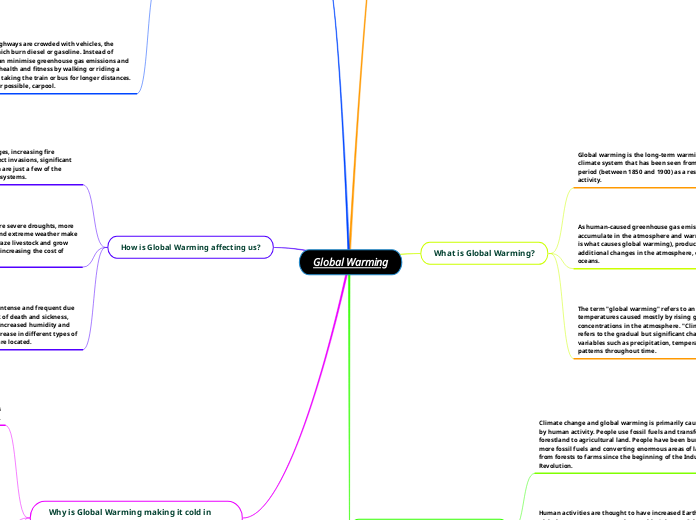Global Warming
Who got affected the most by global warming
First place is Japan, heavy rains, heat waves, the Osaka earthquake, and the Jebi Typhoon, all of which wreaked havoc on Japan in 2018, have rendered it the world's most climate-vulnerable country. Weather-related deaths resulted for 1,282 deaths on the island, or 1.01 per 100,000 people, as well as $35,839 million in economic losses and a 0.64 percent drop in per capita GDP.
The 2nd country is Philippines, the passage of Typhoon Mangkhut across the Philippines in 2018 impacted over 250,000 people across the country and resulted in at least 59 deaths due to excessive rains. According to Germanwatch, extreme weather occurrences in the country resulted in 455 deaths in that year as well as more than $4.540 million in economic damages and a 0.48 percent decline in GDP per capita.
Due to the heat wave it experienced in 2018, the warmest year in its history, Germany is ranked third among the most vulnerable countries to climate change and global warming, with damages to the agriculture sector totaling more than 3,500 million euros. The weather events in Germany resulted in 1,246 deaths, losses of $5,038 million dollars, and a 0.12% drop in per capita GDP.
What is Global Warming?
Global warming is the long-term warming of Earth's climate system that has been seen from the pre-industrial period (between 1850 and 1900) as a result of human activity.
As human-caused greenhouse gas emissions rise, they accumulate in the atmosphere and warm the climate (this is what causes global warming), producing a slew of additional changes in the atmosphere, on land, and in the oceans.
The term "global warming" refers to an increase in global temperatures caused mostly by rising greenhouse gas concentrations in the atmosphere. "Climate change" refers to the gradual but significant changes in climate variables such as precipitation, temperature, and wind patterns throughout time.
What is causing global warming?
Climate change and global warming is primarily caused by human activity. People use fossil fuels and transform forestland to agricultural land. People have been burning more fossil fuels and converting enormous areas of land from forests to farms since the beginning of the Industrial Revolution.
Human activities are thought to have increased Earth's global average temperature by roughly 1 degree Celsius from the pre-industrial period, with a rate of 0.2 degrees Celsius every decade. It is undeniable that human influence has had an impact on heating the atmosphere, ocean, and land.
Carbon dioxide, a greenhouse gas, is produced when fossil fuels are burned. The world is warmed by the greenhouse effect, much as a greenhouse is warmed by its surroundings. It lasts a very long period in the atmosphere.
How can we stop Global Warming?
Energy and transport, Coal, oil, and gas still provide a significant portion of our electricity and heat. Airplanes and cars are likewise primarily powered by fossil fuels. Use less electricity at home, switch to a wind or solar energy provider, avoid long-haul flights, and drive less to lessen your carbon footprint.
Food production, processing, transportation, consumption, and disposal all contribute to the creation of greenhouse gases. Buy local and seasonal food, eat more plant-based meals, use up what you have, and compost any leftovers to lessen your carbon emissions.
The world's highways are crowded with vehicles, the majority of which burn diesel or gasoline. Instead of driving, you can minimise greenhouse gas emissions and improve your health and fitness by walking or riding a bike. Consider taking the train or bus for longer distances. Also, whenever possible, carpool.
How is Global Warming affecting us?
Temperature rises, water shortages, increasing fire dangers, drought, weed and insect invasions, significant storm damage, and salt invasion are just a few of the effects of global warming on ecosystems.
Changes in rainfall patterns, more severe droughts, more frequent heat waves, flooding, and extreme weather make it more difficult for farmers to graze livestock and grow crops, lowering food supply and increasing the cost of purchasing it.
Heat waves are becoming more intense and frequent due to global warming, posing a risk of death and sickness, particularly among the elderly. Increased humidity and temperatures may lead to an increase in different types of diseases depending where you are located.
Why is Global Warming making it cold in some places?
According to experts from the Massachusetts Institute of Technology, while climate change is commonly associated with the Earth becoming hotter, a rise in greenhouse gases is causing chillier winters in the United States and Europe.
The term "polar vortex" has become increasingly popular in recent years. It's a whirling weather formation that circulates high above the North Pole in the atmosphere. This system's air temperature can drop to -80 degrees Celsius. However, due to a combination of global warming and a phenomenon you've probably heard of: the polar vortex, these extreme cold snaps have become increasingly severe in recent years.
Since 1880, temperature records reveal that the Earth has warmed by about 1 degree Celsius. Short-term weather changes, such as cold snaps, sudden reductions in air temperature that result in a series of colder-than-average days — continue to occur. Cold snaps and global warming can and do coexist in such situations: Cold extremes cover a smaller percentage of the globe's surface than above-average temperatures. To put it another way, what occurs locally or over short periods of time is not always predictive of what occurs nationally or worldwide.
